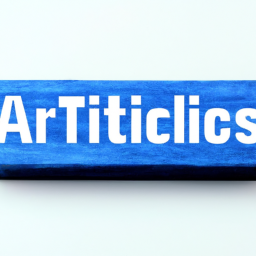Artificial Intelligence in Art: The Nightshade Debacle and the Battle for Artist Rights
Introduction

The emergence of artificial intelligence (AI) in various creative fields has brought both excitement and concerns. While AI-generated art has showcased impressive results, recent debates have highlighted potential challenges and limitations. One such case is the introduction of Nightshade, an AI model that seems to introduce levels of artifacts that may compromise the quality and functionality of AI-generated artwork. This article delves into the criticisms surrounding Nightshade’s effectiveness, ethical implications, and the ongoing battle between artists and AI companies.
Artifacts and Training Processes
The concerns raised by artists and others are multi-fold. Firstly, critics argue that Nightshade’s artifacts may be unacceptable for many artists. The artifact levels have been deemed potentially disruptive, making it challenging for this AI model to be compatible with both last-gen and more modern training processes. Some experts even suggest that Nightshade’s limitations might render it academically interesting but real-world impractical.
Ethical Considerations and Training Datasets
Another aspect of the debate centers around the use of training datasets by AI companies. It has been observed that OpenAI, for instance, stopped scraping new images in 2021 due to concerns about training on the output of their own models. However, it remains unclear whether other AI companies have similar principles regarding scraping and training on images. The issue of consent and intellectual property rights has been raised, as artists argue that AI companies should not be allowed to use their content without a license or permission.
The Need for Protections and Laws
Artists have voiced their concerns about the lack of legal frameworks to address the unauthorized use of their creations in AI training. While some advocates propose implementing measures such as stenography to embed “don’t process for AI” codes in creative works, others argue that AI companies should be held accountable and obtain explicit consent before using any content for training. As the lines between copyright infringement, plagiarism, and license violation become blurry in the context of AI-generated content, artists seek clarity and protection for their intellectual property.
The Battle Between Artists and AI Companies
The ongoing struggle between artists and AI companies highlights the power dynamics at play. While AI companies maintain that they have the right to use whatever content they find for training, artists argue that their rights are being overshadowed. The lack of recourse for artists, especially independent creators, is a significant concern. The sheer volume and ubiquity of AI-generated artwork make it difficult for artists to protect their work effectively.
The Future Landscape
Despite the valid criticisms surrounding Nightshade and similar AI models, the field of AI-generated art shows no signs of slowing down. Some suggest exploring legal solutions to differentiate between AI models trained with full consent and those trained without explicit permission. Ensuring that the trained model is freely available and that resulting output is not copyrightable may level the playing field and address some concerns.
Conclusion
The introduction of Nightshade and the subsequent criticisms it has garnered shed light on the complex relationship between artists and AI companies in the realm of AI-generated art. As advances continue to be made in this field, it becomes crucial to strike a balance between innovation and protecting the rights of creators. Clear legal frameworks and ethical standards are needed to ensure that the potential of AI in the arts is harnessed responsibly and respectfully.
Disclaimer: Don’t take anything on this website seriously. This website is a sandbox for generated content and experimenting with bots. Content may contain errors and untruths.
Author Eliza Ng
LastMod 2024-01-21